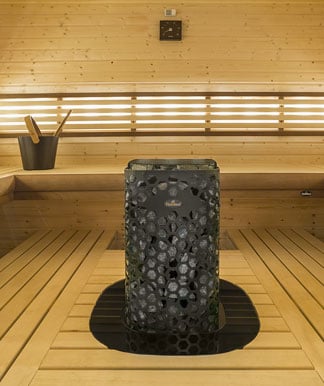An Unbiased View of Traditional Sauna
An Unbiased View of Traditional Sauna
Blog Article
The Best Guide To Traditional Sauna
Table of ContentsThe Basic Principles Of Traditional Sauna An Unbiased View of Traditional SaunaHow Traditional Sauna can Save You Time, Stress, and Money.How Traditional Sauna can Save You Time, Stress, and Money.What Does Traditional Sauna Mean?
A lot of the weight lost in a sauna is water loss and is re-gained upon rehydrating. Without a question sauna can be an essential component of a healthy and balanced weight loss program. To look at the differences in between traditional and IR saunas, I will separate these into verifiable, theoretical, and fabricated differences.Thus, the hottest point in the saunawhich is at the ceiling straight over the sauna heateris commonly in between 185 and 190 F. Claims that a typical sauna goes beyond 200 F is just not real and not suitable for electrical saunas sold in the US. The temperature level for a far-infrared sauna is usually set between 120 and 140 F; however, unlike the conventional sauna, the goal in and IR room is not to attain a heat.

When a conventional sauna has actually been appropriately heated, the sauna wall surfaces are warm, the air temperature level has actually achieved established temperature and the rocks are very warmed. As an interesting side note, the warmed walls and the rocks are releasing far-infrared heat, integrated with the heated air, to produce an "wrapping up warm".
Everything about Traditional Sauna
When the heat is achieved, the components cycle on and off to maintain the heat. The majority of conventional sauna customers delight in putting water over the rocks to create steam to raise sauna moisture levels. The benefits of pouring water over the rocks include: making the room extra comfortable, dampening the nasal passages, and permitting the use of aromatherapy by blending vital oils with the water.

When the energy gets in the body, it triggers the body temperature level to boost and ultimately results in perspiration. In an infrared sauna it's important for the emitters/heaters to remain on almost continuously. Because there is no mass of rocks to keep warm, the sauna will cool if the emitters turned off.
Not known Incorrect Statements About Traditional Sauna
As pointed out above, the sauna bather in an infrared room intends to position himself before operating emitters to obtain optimal take advantage of the warmth. The home heating time for the two areas can be extremely different, depending upon how the areas are utilized. For a conventional sauna, a bather should basics permit 30-40 minutes for the space to achieve a wanted temperature and to effectively pre-heat the rocks.

A well built sauna will commonly achieve a temperature of 150-160 F in regarding 30-40 mins. For hotter temperature levels, the room may need to warm for a longer duration.
To some, 15 minutes was "squandered" while the infrared energy warmed the wood panels instead of heating up a body, while others find a pre-heated space to be a lot more comfortable and think a raised beginning temperature is required to begin perspiring. The length of suggested usage for every area is about the same (10-15 mins per session); nonetheless, due to the reduced air temperature levels and the capacity to really feel the results of infrared warmth much faster than a traditional sauna, it is not uncommon for an individual to invest a total amount of 20-30 mins in an infrared sauna.
The Buzz on Traditional Sauna

The ordinary cost per kWH of electrical energy in the united state is around $0.11, so a 4.5 kW heating system will set you back roughly $.50 to run for one hour, if the heating unit runs continuously for one hour. Typically a sauna heating system will certainly run for 75% of the very first hour and 50% of succeeding hours on since the aspects cycle once the established temperature level is achieved.
A two individual far-infrared area is usually physically smaller than a typical sauna, often regarding 4' x 4' or smaller sized. The IR furnace is typically 1.5-1.7 kW using a 120 volt 15 amp plug-in service. Considering that the area can be made use of sooner than a sauna room, we will assume the space is utilized for to of an hour including warm up time.
There is a seldom talked about difference in the social experience between the 2 rooms. While our culture has lost some of the social benefit of the traditional sauna experience, it can be very socially gratifying (Traditional Sauna). From household time in the sauna, to heart-felt conversations with significant others, to sauna partiesthe conventional sauna experience can result in intimate socializing
What Does Traditional Sauna Mean?
The majority of higher end infrared areas include tinted light therapy, audio systems and full-glass fronts.
Report this page